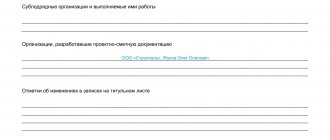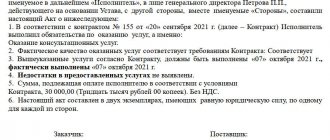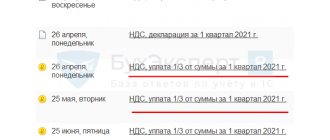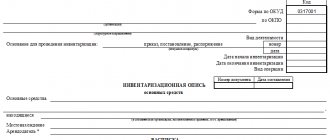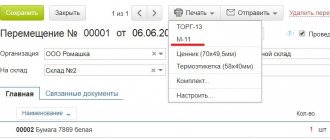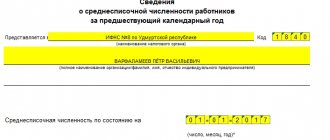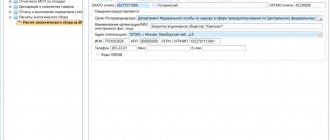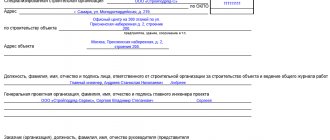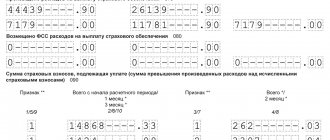What is the KS-6 form (general work log)
Form No. KS-6 was approved by Decree of the State Statistics Committee of Russia dated October 30, 1997 No. 71a. It corresponds to number 0336001 according to OKUD. It is used to record the performance of various works related to construction and installation, and is one of the primary documents that record the technological sequence, quality level, conditions for the production of relevant types of work, as well as their timing.
The form in question is used when carrying out work within the same construction site, involving the construction, reconstruction or expansion of objects that can be combined into a group of the same type or considered as independent.
The general work log in the KS-6 form is kept by an authorized employee of the developer, customer or performer of work at the site, for example, a senior work producer or shift manager who is responsible for carrying out production work at the site.
The following can take part in the procedure for filling out the KS-6 form:
- developer representatives;
- customer representatives;
- employees of the organization developing design solutions.
Along with the KS-6 form, the Russian construction industry uses a document approved in Appendix No. 1 to Rostechnadzor Order No. 7 dated January 12, 2007 (this regulatory legal act was also assigned another number - RD-11-05-2007).
Many legal entities and individual entrepreneurs working in the construction industry fill out both forms for reporting purposes, since in practice government agencies carrying out construction supervision can request either of them - there are no clear criteria for choosing a specific form of the general work log in the legislation.
Read about the features of cost accounting during construction work in the material “Procedure for accounting costs in construction (nuances).”
Construction control is a mandatory stage, the absence of which can lead to fines. ConsultantPlus experts explained in detail how to properly carry out construction control and reflect it in the general work log. Full trial access to the K+ system can be obtained for free.
Maintaining a general journal of work, example with explanations
Next, the main work begins - the formation of records entered into the sections into which the general log of construction work is divided. Each section has its own order of design and is aimed at providing certain information.
Section 1
Provides a list of technical and technical information. The data of persons who are direct participants in construction are entered here. In the first section, the general contractor includes all specialists of the organization that has entered into an agreement with the customer, working directly on the site. Additionally, specialist subcontractors are included.
All listed personnel must undergo certification in the field of TB and other training, without which they will not be able to obtain permission to work.
Section 2
This section contains all registered special journals in which work performed and processes for individual types of work are written, aimed at ensuring and maintaining work activity. We are talking about providing logs where the supply of materials and equipment is controlled, individual important processes are taken into account: pouring concrete, welding pipeline joints, and many other significant works.
The list of required special journals can be found in the list of acceptance documentation provided by the Customer.
Section 3
The third section is considered the main one. Information about the progress of work is recorded here. Records are kept on the basis of clause 8.3 of the OJR in RD11-05-2007 and contain the following information:
Column 1: Sequential number starting from the first record
Column 2: Dates of work completion
Column 3: Description of specific work with brief clarifications, such as:
- structural elements;
- technological processes;
- location reference (axis, floor, pickets, mileage, etc.);
- method of performing work;
- material and technical resources.
If necessary, it is also possible to add information about temperature, precipitation, and enter the project code to the records.
Almost all work included in section 3 must be certified in the appropriate forms, so it’s worth taking into account and not writing too much. For the best completion and synchronization with the as-built documentation, we recommend taking the wording of the work from the acts of hidden work (clause 5 of the AOSR) and other acts, thus the readability of the work report is many times higher, and verification becomes more convenient.
All of the listed types of work are documented in the as-built documentation, and the deadlines for completing the work specified in the acts must coincide with the deadlines in the general work log.
In column No. 4, every day (if the work was carried out), the employee authorized to conduct the fire safety work (indicated in the title page as an authorized person carrying out construction) puts his signature.
Section 4
This includes information on the construction control of the developer or customer.
This section is also mandatory to complete, since the customer or developer is required to carry out construction control. During inspections, all comments are recorded in this section with a deadline for eliminating the identified deficiencies. If there are no deficiencies, a record is made of the inspection performed (information, date of inspection, “no deficiencies”).
If section No. 4 is ignored, a fine may be imposed on the organization carrying out construction work. Even if all verbal comments have been eliminated.
Section 5
Exactly the same section as section No. 4, only entries are made by the person carrying out construction on construction control issues (indicated on the title page). Accordingly, the construction company is responsible for filling out this log.
Section 6
Section 6 is provided for a list of all acts from the executive body, indicating the date of signing and all signatories. Permissions are not included in this section.
Section 6 is tedious and time-consuming. Usually, during the entire construction period, a large number of acts accumulate that will need to be entered, so it is worthwhile to provide for and make this section in terms of the number of sheets at least the same as section No. 3.
A huge number of such documents may accumulate over the entire construction period, and the table in section 6 of the journal may not be enough. In this case, a printout of the section is made and registered in the State Tax Service. You can check with the customer in advance about the need for such an action.
Section 7
This section is intended for regulatory government agencies. Contains information filled out by the state. construction supervision based on the results of inspections.
Form RD-11-05-2007 as an alternative to the KS-6 journal
Order No. 7 of Rostechnadzor dated January 12, 2007 establishes, first of all, the procedure in accordance with which the general work log should be kept. This order was issued in order to implement the provisions of Art. 54 of the Town Planning Code of the Russian Federation, as well as sub. “b” clause 13 of the Regulations on state construction supervision, approved by Decree of the Government of the Russian Federation dated 01.02.2006 No. 54.
The general work log, in accordance with the provisions of the order RD-11-05-2007, is a source in which:
- records are kept of all work related to construction, reconstruction, and major repairs;
- the sequence of performance of the relevant work is reflected;
- the terms and conditions of work are indicated;
- information on control and supervision carried out by government agencies is recorded.
The general work log in the form RD-11-05-2007 must be submitted no later than 7 days before the actual start of work to the state body carrying out the construction supervision procedure in cases provided for by the provisions of paragraph 1 of Art. 54 of the Town Planning Code of the Russian Federation. Along with the journal, this body is provided with:
- a copy of the construction permit;
- design solutions;
- a copy of the document confirming the placement of so-called red lines on the area;
- work logs classified as special;
- conclusion of an examination of design solutions, if one is required, based on the provisions of Art. 49 of the Code.
The state body carrying out construction supervision seals this journal, as well as special journals, puts a registration signature on them and returns the corresponding package of documents to the developer or customer so that they can keep records of the work. If the current journal ends, then a new copy must be registered with the construction supervision authority, on which a mark with the number - 1, 2, etc. must be affixed.
Completed logs in form RD-11-05-2007 must be kept by the developer or customer until the completion of the final inspection carried out by the construction supervision authority. During the period of such inspection, the journal is at the disposal of the relevant regulatory authority.
Registration with the SSN authorities
The general work log, like other special work logs, if state construction supervision is carried out during the construction of an object, must be registered with these authorities.
According to Part 5 of Art. 52 of the Civil Code of the Russian Federation, the general log of work when submitting a notice of the start of construction must be transferred for registration to the State Construction Supervision Authority.
Before this, it must have title pages, the magazine must be bound and numbered, and secured with the seal of the developer’s organization. If the developer is an individual, then only a signature is sufficient.
What is a journal of work performed in form KS-6a?
Form KS-6a was approved by Decree of the State Statistics Committee of the Russian Federation dated November 11, 1999 No. 100. It corresponds to number 0322006 according to OKUD.
The logbook for the work performed in the KS-6a form must be kept by the work performer, using:
- data on measurements of completed work at construction sites;
- information on uniform standards and prices relating to structural elements or types of work.
Based on the information contained in this journal, the following are compiled:
- acceptance certificate - in form KS-2;
- certificate of cost of work - in form KS-3.
You can learn more about forms No. KS-2 and KS-3 and see examples of filling them out in the articles:
- ;
- “Unified form No. KS-3 - form and sample”.
Can an organization be fined under Art. 120 of the Tax Code of the Russian Federation in case of failure to keep a log of work performed in form KS-6a, if it uses form KS-2? The answer to this question is in ConsultantPlus. If you do not have access to the K+ system, get a trial online access for free.
But why is the KS-6a form needed if information about work on construction sites is recorded in the KS-6 or RD-11-05-2007 journal?
The main difference between this journal form and the previous ones is that information on work is always entered into it for each property separately. While forms KS-6 and RD-11-05-2007 allow the inclusion of information on the construction site as a whole.
Section three
This section is the most important in the journal itself, since it contains all the information about the work done. The table contains:
due date- data on the completed task indicating the authorized act (if it was drawn up separately)
- the result of quality control of the completed task
- responsible person who carried out the inspection
Some companies provide even more information - displaying the amount of work performed by each employee in each shift, the number of the completed floor or room, and the brand of material used.
This is necessary to avoid problems regarding claims received from customers. Often, foremen - responsible persons - display all the information that was specified by customers. For example, the project features an unusual arrangement of the communication system. The construction company can explain the risks of such a decision. If the customer does not want to reconsider his decision, the foremen strive to review all the actions of the workers during the implementation of the project for compliance with the requirements of the second party.
Are journals KS-6, KS-6a and RD-11-05-2007 required to record work performed?
Information from the Ministry of Finance of the Russian Federation dated December 4, 2012 No. PZ-10/2012 contains the department’s opinion with reference to the new law dated December 6, 2011 No. 402-FZ that it is not necessary to use unified forms of primary documentation from 2013.
These forms, on the one hand, include forms KS-6 and KS-6a. On the other hand, there are no criteria that allow us to classify the RD-11-05-2007 form as unified. What document, then, should Russian builders use to record work?
In this case, it is legitimate to talk about the need for a correct comparison of legal norms and law enforcement practice.
As for the first aspect, the provisions of sub. “b” clause 13 of the Decree of the Government of the Russian Federation dated 01.02.2006 No. 54 instructs construction supervision authorities to somehow check the availability of a general work log. On the one hand, the legislator does not specify its form, on the other hand, in the same subsection. “b” clause 13 of Resolution No. 54 introduces a rule according to which the procedure for maintaining the relevant journal is established by Rostechnadzor. Since this department issued document RD-11-05-2007, we can conclude that the form of the construction work log should, first of all, correspond to that approved in RD-11-05-2007.
However, as practice shows, in many regions of the Russian Federation, construction supervision authorities, due to the established legal tradition, require keeping a log in the KS-6 form. Sometimes both forms are requested at once.
Moreover, among lawyers there is a widespread point of view according to which form No. KS-6a is primary in relation to other journals, even in cases where the real estate object is the only one on the site. Since it is not necessary to use unified forms, the construction supervision authority may well request it (or a similar one).
Thus, in practice, it may be necessary to provide the construction supervision authority with all 3 documents we considered:
- form KS-6;
- form KS-6a;
- form RD-11-05-2007.
It all depends on the policies of regional government structures that supervise the construction sector. But very often the state limits itself to requesting a document approved in accordance with RD-11-05-2007 - perhaps due to the fact that the need to fill it out becomes obvious upon a literal reading of the provisions of Government Resolution No. 54 dated 01.02.2006.
For information on how labor protection is carried out during construction work, read the material “Rules for labor protection in construction.”
Sample of filling out the general work log according to form KS-6
On the title page of the KS-6 journal we record:
- name of the organization carrying out construction work, its address, OKPO;
- description of the object (for example, “monolithic residential building with underground parking”), its address;
- Full name, position of the representative of the legal entity responsible for the construction of the building, as well as for maintaining the journal;
- name of the design organization, full name, position of its representative;
- name of the customer, if it is a legal entity - position, full name of the representative;
- the start and end dates of work - according to the contract or actually (if they coincide, then we write only the terms under the contract);
- number of pages in the magazine (it must be bound and numbered);
- Full name, position of the head of the company that issued the magazine;
- key characteristics of the building, cost of work in words and figures (for example, “20-story residential building with a parking lot for 100 parking spaces. The cost of work is 30,000,000 (thirty million) rubles. 00 kopecks.”);
- name of the approving authority and date of approval of the construction project (for example, “Department of the Smolensk Region for Architecture and Construction”, 02/17/2017);
- name of subcontractor organizations - if any are involved in the implementation of the project;
- The name of the organization that developed the project documentation must match that indicated above.
Filling out the title page
The first thing to do is fill out the title page. To do this, you need to enter the following information in the table:
- Name of the contractor company with details of its authorized person or manager. It is necessary to enter the OKPO code, which is taken from the registration documents issued earlier.
- The name of the object on which the organization is working. Provide the location address, including the legal address used in registration documents.
The name of the enterprise that is drafting the work plan, indicating the details of the authorized person.- The name of the company that is the customer, indicating the details of the authorized person. Here you can only indicate the full name of the company representative, who is always present at the negotiations. His powers are approved by management through the creation of an order.
- Start and end dates of construction work. It is necessary to indicate the numbers according to plan and in fact - corresponding to the start of work and the end in real life.
- Details of the head of the construction contracting company. He may not be the responsible person for the construction work in this case, but his responsibility is not excluded.
- The final date for registration of the completed log is the date it is checked and signed by the director of the contractor company.
- Details of the permit, which is the basis for starting construction work.
- If additional persons and companies are involved in construction, they must be indicated.
- If the project documents were handled by a third-party organization, it must be indicated with the obligatory clarification of the author of the project or the person responsible for it.
If changes occurred in the journal during the work process, they are indicated on the title page in accordance with the time of the changes that occurred. Each change is registered with the head of the construction contractor company - opposite the date and type of change, the director of the organization puts his signature.
Nuances of video journaling:
Filling out sections of the KS-6 form
A sample of filling out the KS-6 form can be downloaded from our website:
Section 1 states:
- Full name, positions of the company employees performing the work, as well as the areas in which they work (for example, “Andreev S.V., foreman, installation of building structures”);
- start and end dates of work performed by a specific employee;
- information about the document confirming the employee’s qualifications (for example, “Engineer Qualification Certificate No. 111 222, issued on 12/10/20XX”).
To learn about the professional requirements for construction workers, read the article “Professional Standards in Construction.”
Section 2 reflects:
- names of various acts related to construction (for example, “Act on the assembly of building structures”, “Act on approval of the technical report and drawings”);
- dates of signing of the relevant acts, full names and positions of the employees who signed them.
For each act, a serial number is recorded.
Section 3 states:
- dates of activities for monitoring and assessing the quality of work;
- names of structural parts of buildings, indication of their location, links to the numbers of the corresponding drawings (for example, “Pit, drawing No. 20 dated 08/20/20XX”);
- control results (for example, “The pit corresponds to the drawing, there are no complaints”);
- names of the companies that carried out the inspection, full names and positions of the inspection specialists.
In section 4 it is necessary to record:
- names and dates of issue of special journals used during the implementation of the construction project (for example, “Journal for conducting engineering tests, 04/15/2017”);
- names of companies maintaining relevant journals, full names and positions of employees responsible for maintaining these documents;
- dates of delivery and acceptance of special journals, signatures of the general director of the contractor organization.
Section 5 provides:
- start and completion dates of work - in one column (for example, “05/01/2017–05/17/20ХХ”);
- description of the work, conditions for its implementation, full name and position of the responsible persons (for example, “Installation of construction equipment, responsible: foreman Andreev S.V.”);
- position and signatures of the employee responsible for working with the magazine.
For information on the document used to formalize the acceptance of completed construction work, read the material “Acceptance Certificate of Completed Construction Work - Sample.”
Section 6 is completed by employees of government agencies. They record:
- date of inspection;
- comments, full names, positions of inspectors;
- notes indicating that the comments were accepted for implementation, and checking that the reasons that caused them have been eliminated.
On the last page of form No. KS-6 after section 6 the following is indicated:
- number of sheets in the document;
- Full name, position, signature of the person in charge, seal;
- date of signing of the journal.
Log registration
In accordance with clause 11. The procedure for the formation and conduct of affairs in the implementation of state construction supervision, approved by order of the Federal Service for Environmental, Technological and Nuclear Supervision dated December 26, 2006 No. 1130 (RD-03-2006), general and special journals are subject to registration in Gosstroynadzor.
The document is numbered, stapled, the number of sheets indicated, signed and sealed. Registration is carried out by personal application to Gosstroynadzor. It is advisable to attach a covering letter or statement:
| Application for registration of a general journal of construction work __________________ "____" _______________ 202___ 1. Developer (technical customer) (last name, first name, patronymic, residential address, OGRNIP, TIN of an individual entrepreneur) 2. Object (name in accordance with the construction permit, brief design characteristics) 3. Address (location) of the capital construction project (postal or construction address of the capital construction project) 4. Permission to construct a capital construction project (number and date of issue, body or organization that issued it, validity period) 7. Start of construction, reconstruction (date of) 8. Completion of construction, reconstruction (expiration date) Please register the attached general log of construction work. _________________________________ (position, signature, date) |
After registration, work begins and the document is filled out. The deadline for registering a document is not regulated by law, but it is registered before the start of work. With the written permission of the supervisory authority, maintenance in electronic form is allowed.
Form RD-11-05-2007 as an example of filling out a general work log
You can download a completed sample of the specified form RD-11-05-2007 on our website:
The main differences in filling out the title page of the form in question and the previous one in terms of filling out the title page:
- in the form RD-11-05-2007 it is assumed to indicate the name of the developer, the customer and the organization that actually carries out the construction;
- in the form RD-11-05-2007 it is expected to indicate the persons responsible for construction control - from the customer or developer or from the company that carries out the construction;
- in the form RD-11-05-2007, the state supervisory authority puts marks on the title page.
The main differences between the form RD-11-05-2007 and KS-6 in terms of filling out section 1:
- the name of the company carrying out the construction is indicated;
- Full name is indicated. and the position of a representative of the construction company;
- information about the document confirming the employee’s qualifications is not indicated.
Regarding section 2 of the general work log:
- this section of the RD-11-05-2007 form coincides in purpose with section 4 in the KS-6 form;
- The information indicated in the section is certified by the signature of a representative of the developer or the customer.
Regarding Section 3
- this section coincides in purpose with section 5 in the KS-6 form;
- the position and full name are indicated. representative of the company that carries out the construction.
As for sections 4 and 5, section 3 in form KS-6 corresponds to those in purpose, however, the structure of sections in form RD-11-05-2007 differs significantly from that in form No. KS-6. Thus, in sections 4 and 5 of the form under consideration the following is recorded:
- serial number of the control activity;
- control data;
- information about identified deficiencies, the deadline and date for their elimination;
- Full name, position of representative of the developer or customer.
Besides:
- the information in section 4 is certified by the signature of a representative of the developer or customer;
- the information in section 5 is certified by the signature of a representative of the company carrying out the construction.
Section 6 of the general work log in form RD-11-05-2007 generally corresponds in structure and purpose to section 2 in form KS-6.
Section 7 corresponds in purpose to section 6 in the KS-6 form. Main differences:
- the form RD-11-05-2007 records the period and date for eliminating the violations identified during the supervisory inspection;
- The number of the event is recorded in order.
Decor
Many people have difficulties when filling out the OJR, since there are a lot of points in it. Getting everything right the first time is very difficult. Besides, they don’t teach this anywhere. Let's start with the design of the title pages.
Title page
The construction work must be completed, registered and handed over to the person carrying out the construction by the developer, but in practice this is done by the general contractor.
First of all, we number the magazine. We indicate the name of the object and its address.
Hint: “We take the name of the object from the design documentation or from the construction permit.”
Next step.
We indicate the developer and all his data from the interlinear source.
The developer is the person who owns the land (ownership, lease, sublease). You can also refer to Part 16 of Art. 1 of the Civil Code of the Russian Federation, which defines the concept of “developer”.
Hint: “You can also determine who the developer is from the building permit. The permit is always issued to the developer.”
Next step.
Customer. There are cases when the customer is a ministry or local government, and the land belongs to another person, for example a school, boarding school, etc. In this case, the developer will be one, and the customer will be another. In such cases, it is necessary to record the customer’s data in a journal.
It is also possible that the developer will hire a technical customer who will perform some of the developer’s duties in his place. The definition of a technical customer can be found in Part 22 of Article 1 of the Civil Code of the Russian Federation.
Next step.
Construction permit information. The number and date of the permit and the authority that issued it are indicated here.
Hint: “The person carrying out the construction must ensure that a valid building permit is available before starting construction work. That is, you are required to request a copy of the construction permit from the developer. Otherwise, you face administrative punishment under Part 1 of Art. 9.5 of the Code of Administrative Offenses of the Russian Federation in the form of a fine of up to 1 million rubles.”
Next step.
We indicate all the information about the design organization according to the wording. We also indicate representatives of the designer's supervision at the site.
Hint: “Designer’s supervision is required only during the construction of particularly dangerous and unique objects. In other cases, only on a voluntary basis.”
Next step.
We indicate information about the examination of project documentation. Recently, the concept of non-state expertise has appeared in urban planning legislation. But RD 11-05-2007 has not been amended for a long time, so it contains the term state examination.
Hint: “We indicate information on the examination only if there is an examination of the project documentation.” It is not always necessary to undergo a project review. Whether your project is subject to examination or not, you can find out by reading Art. 49 Civil Code of the Russian Federation."
Next step.
We indicate information about the person carrying out the construction. This is the general contractor of the facility.
Hint: “I advise you to indicate in the table not only an authorized representative (usually chief engineers or deputy directors), but also the person who will directly maintain the journal. Since RD 11-05-2007 states that section 3 of the OJR can only be filled out by authorized representatives, that is, those indicated in the table on the title page. It’s just that in practice there were such comments from the GOS.”
Next step.
We fill in the information for authorized representatives on construction control issues. According to Art. 53 of the Civil Code of the Russian Federation, construction control is required to be carried out by both developers and persons carrying out construction. If you are one person and a developer and a general contractor, then fill out only the second table; if you are different persons, then both tables.
Hint: “There may be several building control engineers for each section of the design documents. We indicate everyone."
Next step.
We indicate information about all subcontractors and their authorized representatives.
Next step.
We indicate information about state construction supervision and information about the object.
Hint: “We fill it out if it is necessary to carry out state construction supervision at the site. And in what cases you can definitely figure it out by reading Articles 52 and 54 of the Civil Code of the Russian Federation.”
Next step.
We indicate the start date of construction. We fill in the completion date only upon completion of construction. We write down how many sheets the magazine consists of. An authorized representative of the developer must sign and seal it. Next, the journal is submitted for registration to the State Tax Service authorities, if necessary.
The SOS authorities draw up their lines and register a journal, indicate the case number, registration date and information on the inspectors appointed responsible for your facility.
That's all, the title page of the general work journal is completed.
There are times when it becomes necessary to make changes to the title page of a magazine. Since you cannot cross out or color in the journal, there is a special table for making changes.
Section 1
In this section, you need to indicate all engineering and technical personnel, briefly engineering and technical personnel, who are directly involved in construction, that is, everyone for whom there is an order for the facility. These are foremen and foremen, construction control engineers, OKS and technical maintenance engineers, safety engineers, etc.
Hint: “The person responsible for completing “Section 1” is the authorized representative of the person carrying out the construction, who is indicated on the title page of the magazine.”
Section 2
This section contains all special work logs. Such as a journal for concrete work, a journal for welding work, a journal for architectural supervision, a journal for the installation of building structures, etc.
Hint: “Upon completion of the special magazines, they are handed over to the developer or customer for storage. An entry about this is made in Section 2 of the general work log, where the date of transfer is indicated and the signature of the authorized representative of the developer or the customer is affixed. Of course, this can be done with a cover letter, but letters tend to get lost over time, and the general journal of work, as usual, is stored for many years.”
Section 3
This is the main section of the general work log. It is here that daily records of work are made. How to fill it out correctly is indicated in Part 8.3 of RD 11-05-2007:
Hint: “All work completion dates indicated in section 3 must coincide with the completion dates in the hidden work reports. You can’t gloss over your notes, it’s better to cross them out and make a note. Otherwise, the GOS authorities may force the OJR to be rewritten.”
You can learn more about filling out section 3 of the OJR from the article “How to correctly fill out section 3 of the general work log.”
Section 4
In this section, the developer’s representative on construction control issues makes his comments. Indicates the dates of elimination and makes notes on their implementation.
Section 5
Similar to section 4, only entries are made by a representative of the person carrying out construction on construction control issues.
Hint: “GOS inspectors like to look at sections 4 and 5 of the OJR, so I advise you to promptly eliminate all the comments indicated in these sections and record their implementation.”
Section 6
This section maintains a register of all acts drawn up during the construction process. This section is a little useless, but it still needs to be filled out on time so as not to stumble upon fines from the State Tax Service.
Section 7
This section is filled out similarly to sections 4 and 5, but by inspectors of state construction supervision.
Example of filling out form KS-6a
The completed form KS-6a is available for download on our website:
The following is recorded on the title page of the document:
- names, addresses, OKPO, telephone numbers of the customer and contractor;
- construction site address;
- description of the construction project and a summary of the work (for example, “Development of a foundation pit for a 20-story residential building with an underground parking lot”);
- estimated or contractual cost of the project - in numbers;
- Full name, position of the journal compiler, his signature;
- Full name, position of the contractor's manager, his signature.
The main section of the KS-6a form is presented in the form of a table with 46 columns.
Another sample was prepared by ConsultantPlus experts. Study the material by getting trial access to the K+ system for free.
Column No. 1 records the serial number of the record about a particular work performed at the site. Column No. 2 indicates the position of this work according to the estimate. Column No. 3 reflects the name of the corresponding work.
A dash is placed in column No. 4 if the cost of construction work is fixed in the contract (letter of the Ministry of Finance of the Russian Federation dated May 31, 2005 No. 01-02-9/381).
Column No. 5 indicates the unit of measurement that correlates with the nature of the work. For example, if this is the development of a pit, then the volume of soil extracted from the ground in cubic meters may be indicated.
Column No. 6 records the cost of performing a unit of work - in our case, this is the cost of extracting 1 cubic meter. meter of soil in rubles.
Column No. 7 indicates the amount of work - in our case, cubic meters. meter of soil extracted from the ground.
Column No. 8 indicates the estimated cost of the work - as the product of the indicators recorded in the previous 2 columns.
Columns No. 9, 10, 11 indicate, respectively, the number of works, their cost for January, as well as the total since the start of construction. Columns No. 12, 13, 14 contain the same indicators for February. Moreover, if in January any indicators were recorded in column No. 11, they are summed up with the figures in column No. 13 and entered in column No. 14. If not, the indicators in columns No. 10, 13 are summed up, after which the resulting result is entered in column No. 14. Similarly, the columns for March and subsequent months are filled in with a cumulative total.
Column No. 45 records the total number of works in a particular type, and column No. 46 records their total cost for all months of the year.
In all columns in which indicators are recorded in rubles, for example, in columns No. 8, 10, 11, 13, 14, the total indicator is calculated and entered in the “Total” column. If in the reporting month there were no overheads or other expenses not included in the estimate, then the figures in the “Total” column are copied to the “Total” column. If there were overheads and other costs, they must be added to the corresponding figures in “Total” and the result recorded in the “Total” column.
Section one
The first section is data about the employees of the contractor company who are starting to carry out the work planned in the log. The data is indicated as follows:
- Full name of each employee
- next to his last name is the date when he immediately began to perform his duties
- document permitting access to construction work - number of the certification document
If the facility has several sections and employees are distributed in a certain way, the number of the structural unit is indicated next to each employee. The separation of people occurs by the person responsible for the object described in the magazine or the head of the contractor company. Sometimes this is the same person, so his data will appear on the title page several times.
Results
The general work log is presented in several forms: form KS-6, KS-6a and RD-11-05-2007.
The form in question is used when carrying out work within the same construction site, involving the construction, reconstruction or expansion of objects that can be combined into a group of the same type or considered as independent. You can find more complete information on the topic in ConsultantPlus. Free trial access to the system for 2 days.
Registration of a general work log
According to clause 7 of RD 11-05-2007, the magazine must be published in A4 format in a typographic way. This means that the forms are printed using printing technology that contains the appropriate stamp ink and printing cliché. There are several nuances in document formatting:
- The customer or developer must number the pages of the magazine and bind it.
- Entries are made in text form. The journal begins to be kept from the very first work until the moment when construction is actually completed.
- If a recording is made incorrectly, it must not be covered up or sealed. You just need to cross out, write what you need and make a note “believe corrected”.
- It is recommended to start filling out sections 3 to 6 when you already have a building permit in hand. These parts often involve a lot of rewriting. Therefore, first you should make notes in a draft.
- It is worth scanning or photographing sections periodically. If the journal is lost, then you will have something to transfer the entries to a new document.
